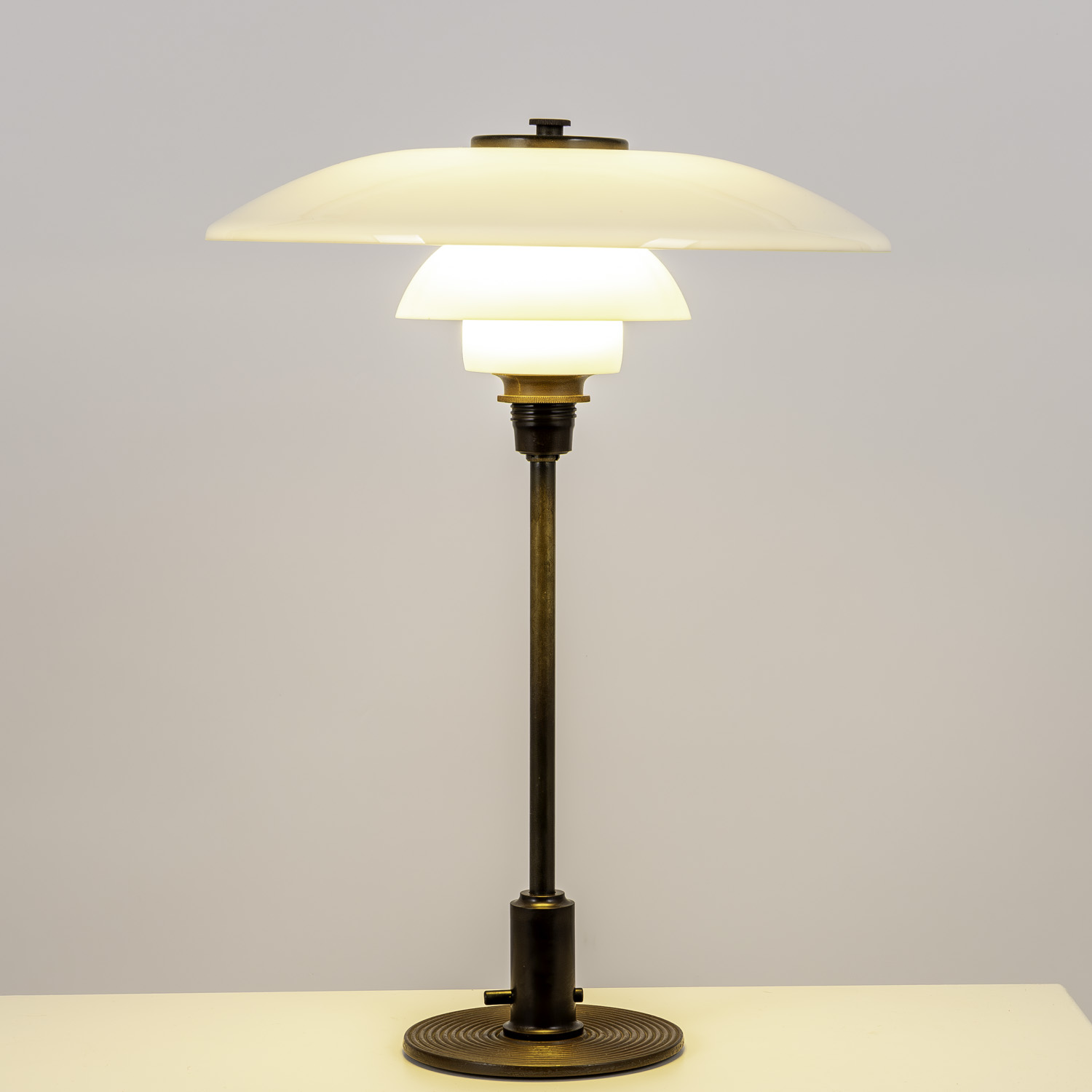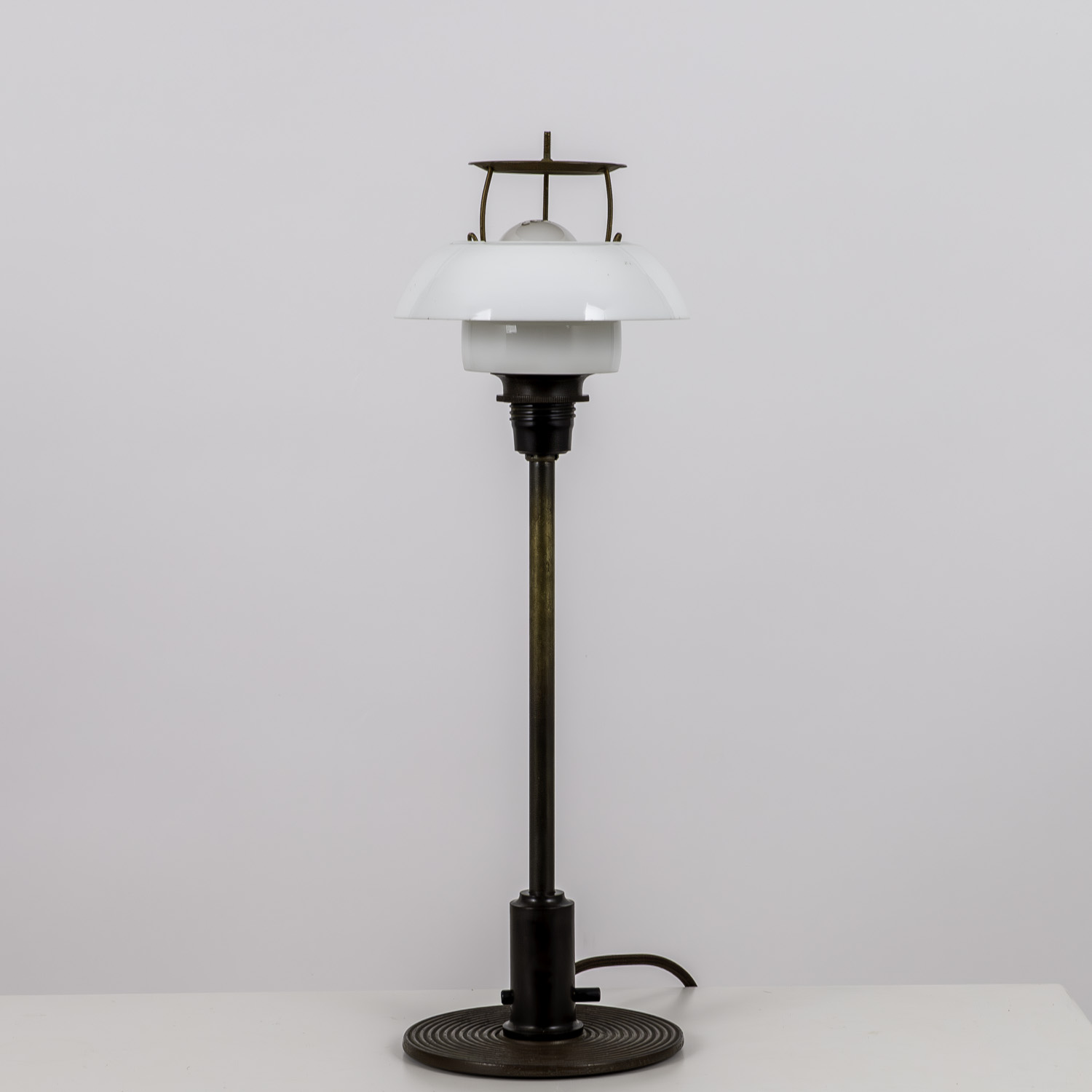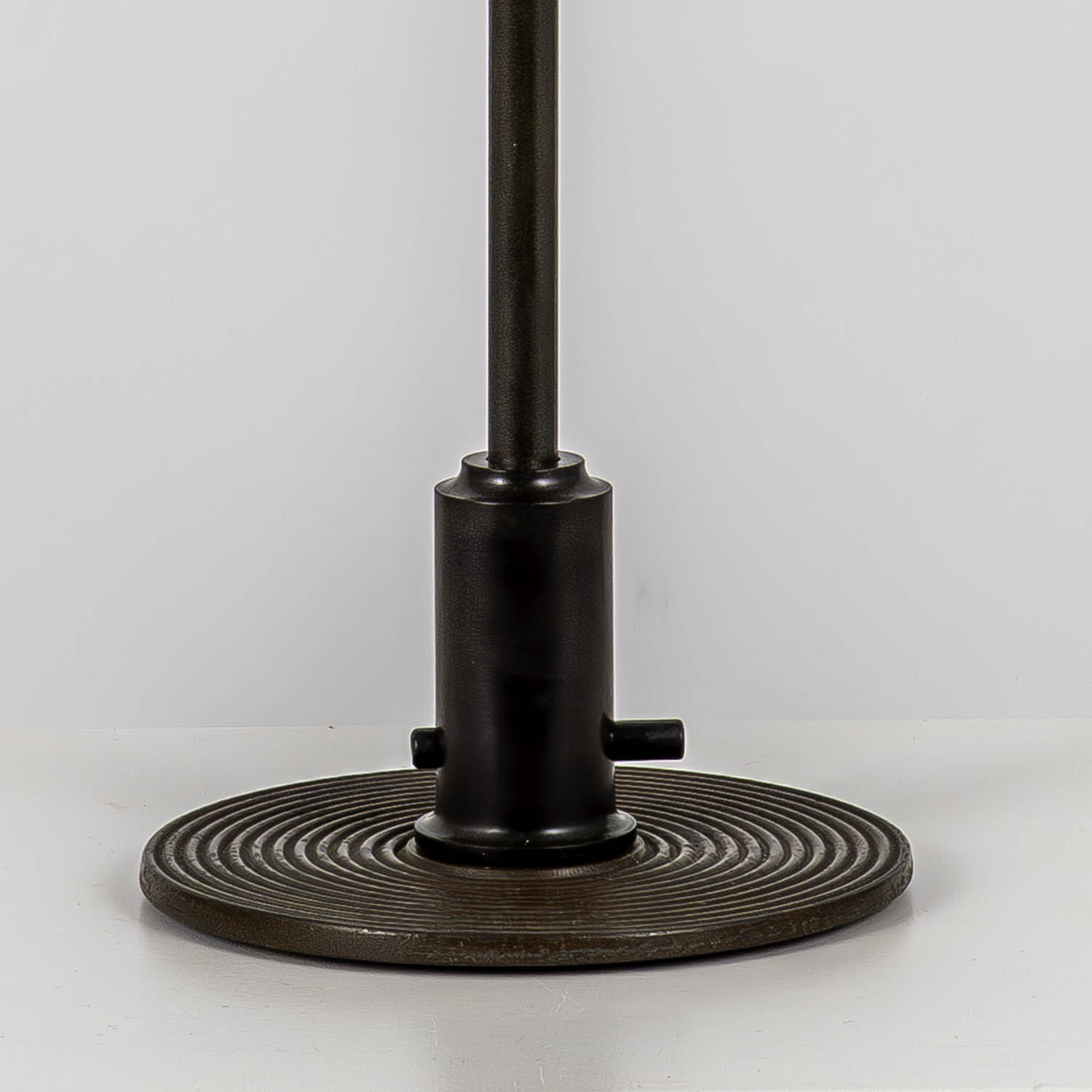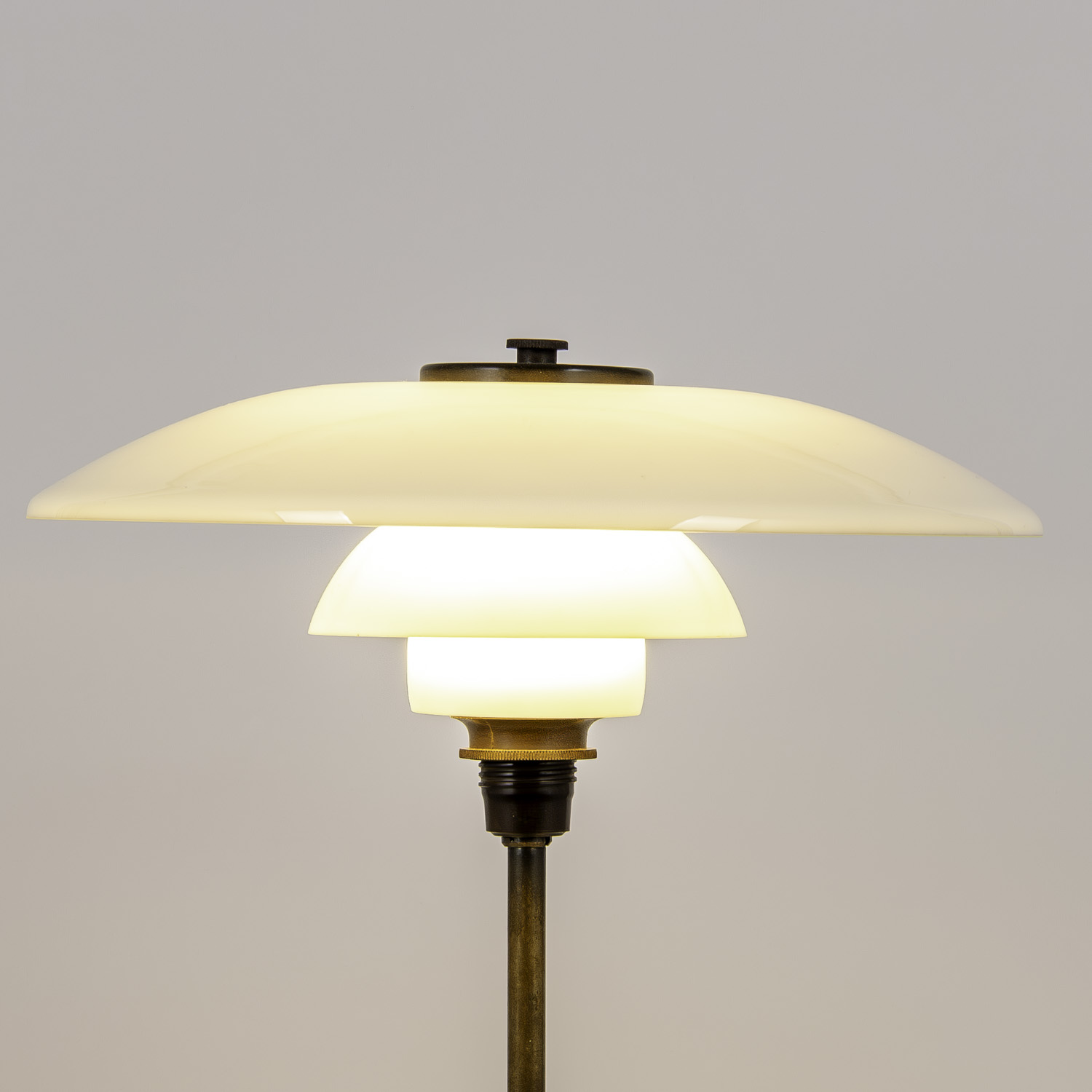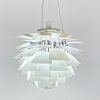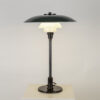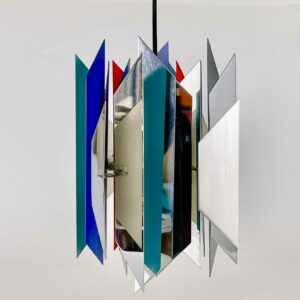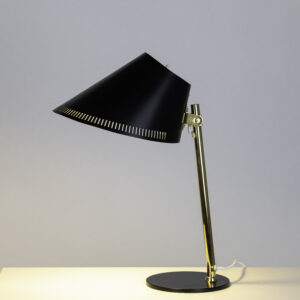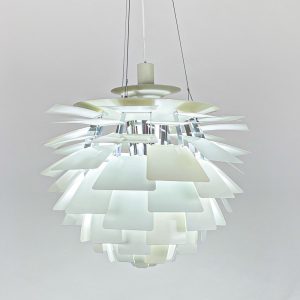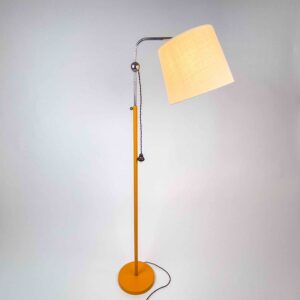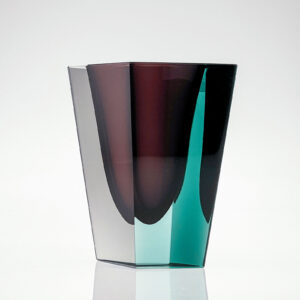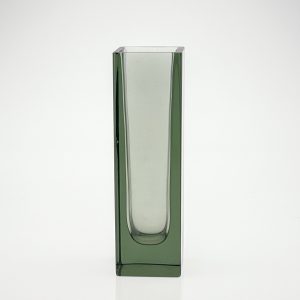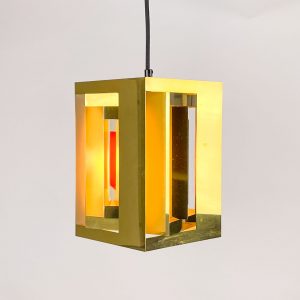| Execution | Louis Poulsen, Denmark circa 1933 |
|---|---|
| Literature | Tina Jørstian and Poul Erik Munk Nielsen (ed.), “Light Years Ahead: The Story of the PH Lamp Louis Poulsen” |
| Condition | This PH lamp is in good restored condition. We had the lamp rewired. The shades are original, the smaal and middle one has some small chips on the top inside (due to attaching to the lamp) otherwise in good condition. |
| Dimensions | Height 47 cm |
Poul Henningsen – A table light, model “PH 3½-2” – Louis Poulsen, Denmark ca. 1933
€5,150.00
Beschikbaarheid: 1 op voorraad
A browned brass, bakelite and glass table light, model “PH 3½-2” with white opaline glass shades in three sizes. Designed by Poul Henningsen in 1928 and executed between 1933 and 1938 by Louis Poulsen.
The 1933 variant had a slightly simplified contruction to save contruction cost during the worldwide recession. It made use of a brass stem, lacquered duco base with an interesting decoration of rings. It has a bakelite top, socket house and switch.
The size of the top shade identifies this light as a model PH 3½-2 with multilayer white opaline glass shades. It is stamped “Patented” on the socket housing. The lamp is fitted with a pass-through switch.
The light is in good vintage restored condition with undamaged glass shades and bakelite components. On the bakelite ring under the glass shades the light is marked: Patented – PH lampe.
About Poul Henningsen
Poul Henningsen (1894 Ordrup, Denmark – 1967 Hillerød, Denmark) was a famous Danish architect, designer, author and critic. Poul Henningsen is considered one of the leading figures of the Danish cultural live between the two world wars and is most commonly associated with his design of the PH-lamp series of incandescent lights. PH Artichoke
He started his career with the architect Kay Fisker in 1919. From 1920 onwards, Poul Henningsen freelanced as an architect and designer. His most valuable contribution to design was in the field of glare-free illumination. Henningsen spent developing lighting that was not harsh and glaring but shed warm, soft light.
The first lamps in the “PH” range were shown at the International Exhibition of Modern Decorative and Industrial Arts at Paris in 1925. For these designs Henningsen was awarded the gold medal. The 1925 PH-lamps which – like his later designs – used carefully analysed reflecting of the light rays from the bulb to achieve glare-free and uniform illumination. His light fixtures were manufactured by Danish lighting manufacturer Louis Poulsen, a company with which Henningsen would build a lifelong working relationship.
During his first year with Louis Poulsen he developed his first PH-lamp for which he won a gold medal on the 1925 world exhibition in Paris.
His best-known designs are most likely the PH Artichoke (1958) and PH5 (1958). His lighting designs created the economic foundation of his later work. Manufacture and sale of some of his lighting fixtures, such as the PH5 Pendant Lamp, continues today.
Other notable designs by him include the PH Grand Piano (1931), examples of which are included in several prominent twentieth-century design collections, including that of the Metropolitan Museum in New York City. In 1946, he re-designed the Glass Hall (Glassalen) for Tivoli Gardens in Copenhagen.


